Pilot Busts
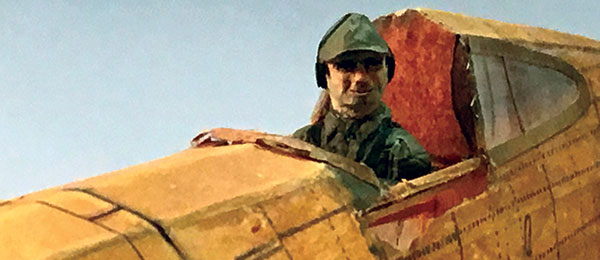
Written by Dennis Norman Free Flight Scale Column As seen in the March 2018 issue of Model Aviation.
At last year’s Flying Aces Club (FAC) Non-Nats, Dave Niedzielski from Easy Built Models, and others, expressed interest in my methods for making pilot busts. I wrote about carving pilots in the June 2007 and the December 2010 issues of Model Aviation. You might want to refer to these articles, but I am happy to again discuss the subject.
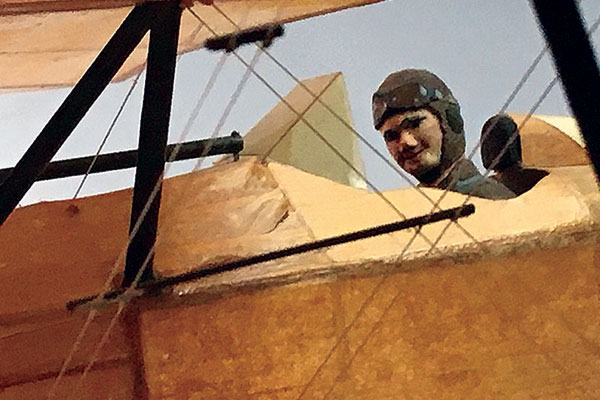
A completed pilot bust graces the cockpit of a 1920s Cleveland Curtiss P-6E Hawk from the famed Snow Owl 17th Pursuit Squadron of Selfridge Field near Detroit.
Traditionally, neither the AMA nor the FAC requires including a pilot bust for FF Scale. When modelers feel compelled to include one, they are permitted to use a 2D line drawing or photograph. Some have said that they feel uncomfortable making pilot busts and derisively equate it to “playing with dolls,” but unless it’s a drone, I feel that a pilot bust is an integral part of any flying aircraft.
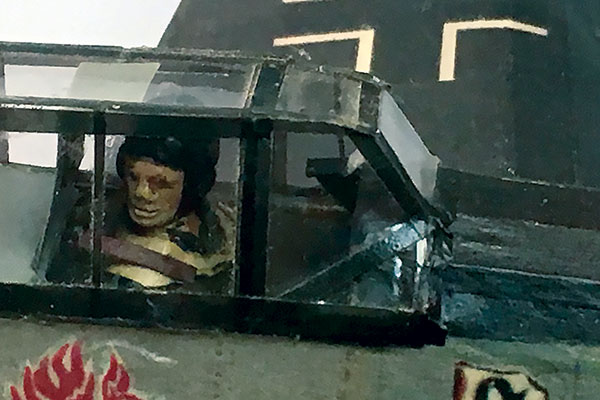
A 1940s Luftwaffe pilot glances out the right window of his Messerschmitt Bf 109E before making a diving turn into British Hurricanes and climbing to a deadly fight.
Carving a pilot bust from wood is best for larger models (3/4-inch scale or larger). When building a model that is less than 3/4-inch scale, I have found that Styrofoam is a better alternative to wood. Several decades ago, the late Gerald Skrjanc (the founder of Micro-X, Inc.) introduced me to a dense, white, fine-grained Styrofoam that he used in his kits. I do not recall the name of the foam’s manufacturer.
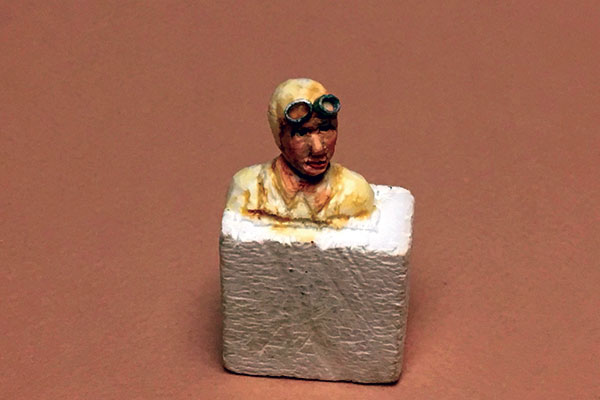
A 5/8-inch scale, partially carved WW I pilot bust sits on top of the fine, white Styrofoam from which it emerged. Simple tools were used to make the eye sockets, nose, etc.
Fortunately, I still have a couple of blocks of it. With foam, you cut the rough shape of a pilot with a saw, and then use a #11 X-Acto knife, pin heads, and other simple tools to compress the foam into anatomical shapes. The foam holds the fine details. To make a pilot bust, start with side-view and (where possible) front-view drawings that are slightly larger than the scale of the model that is being built. Side-view diagrams have been included in the digital edition and online portions of this issue. Cut individual pieces of foam from the block that are the approximate size of the head, shoulders, and upper body then use the previously mentioned tools to shape the nose, eye sockets, etc.
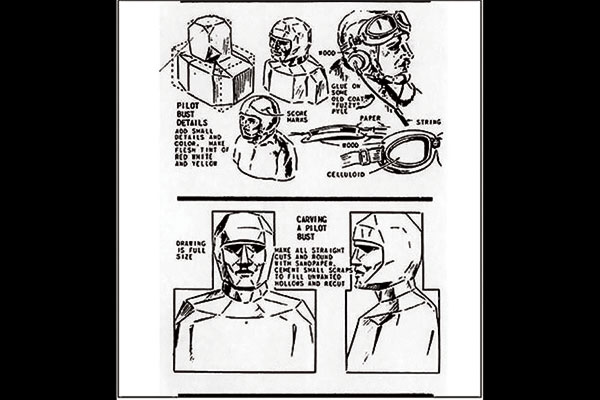
Cleveland Model & Supply Company plans drawings give you a good start on carving and detailing a pilot bust. When the bust is finished, turning the pilot’s head adds realism.
There are diagrams and a useful discussion of painting pilot busts in the January 1995 issue of FineScale Modeler, on pages 56-59. My thanks to Mark Savage, the editor of FineScale Modeler, and to Bob Sarnowski, the article’s author, for permission to reprint it.

A diagram from an article written by Bob Sarnowski in the January 1995 issue of FineScale Modeler depicts painting, shadowing, and highlighting a human head. Photo reprinted with permission from FineScale Modeler.
In the April 1981 issue of World War I Aeroplanes, pages 40-41, there are excellent drawings by J.W. Batter for making a World War I pilot bust. Although this publication is no longer in print (its last edition was #227), special thanks go to Leonard Opdycke for permission to reprint these pages in the digital portion of this column.
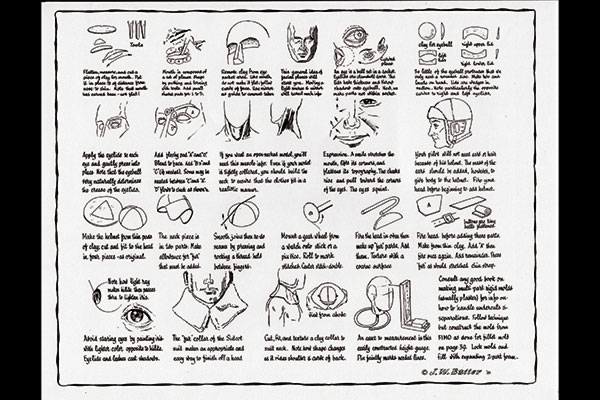
In the “Sources” for this article, I have listed other references to help you with pilot bust carving and coloring. Throughout the years, I have clipped photos and paintings of peoples’ heads to inspire me when I make my pilot busts. As for painting, I usually start the face with a flesh-tone acrylic. When that is dry, I add darker and lighter areas to accent the face. Subtle details such as beard shadow are done with a watercolor wash.
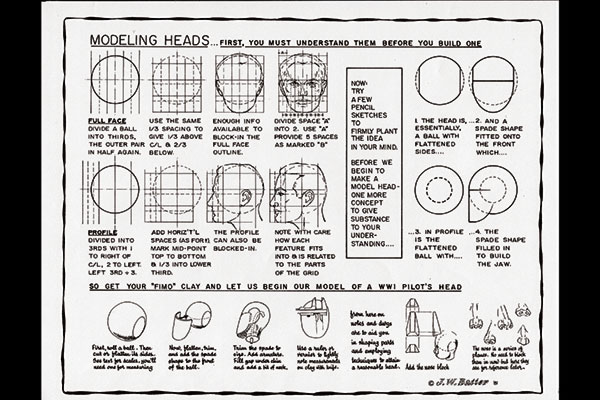
One final thought: When you have carved and painted your pilot bust, additional realism might be obtained by removing the head and repositioning it to indicate that the pilot is looking at something that is about to happen. Enjoy!
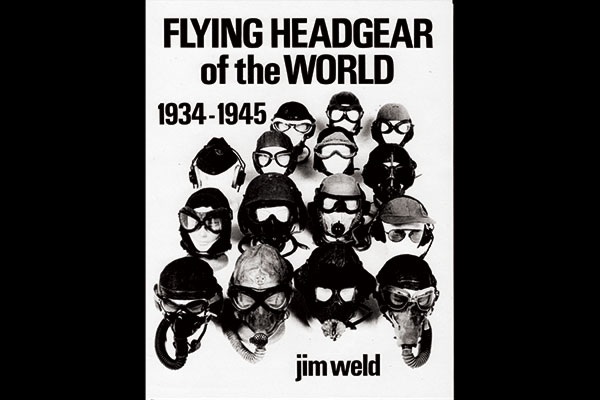
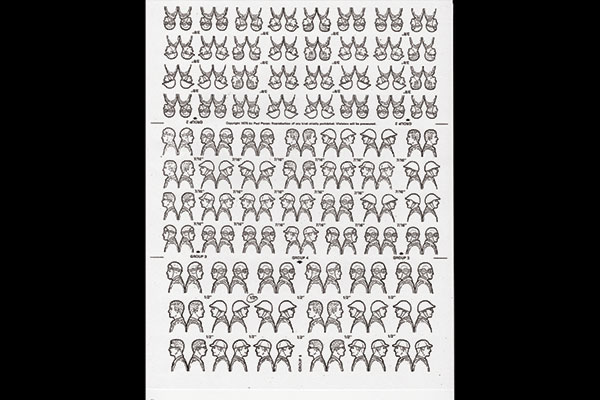
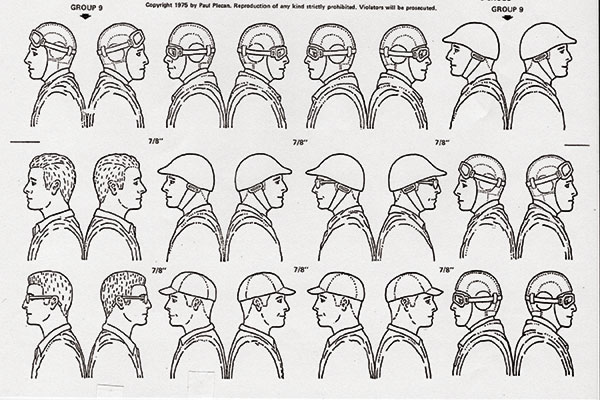
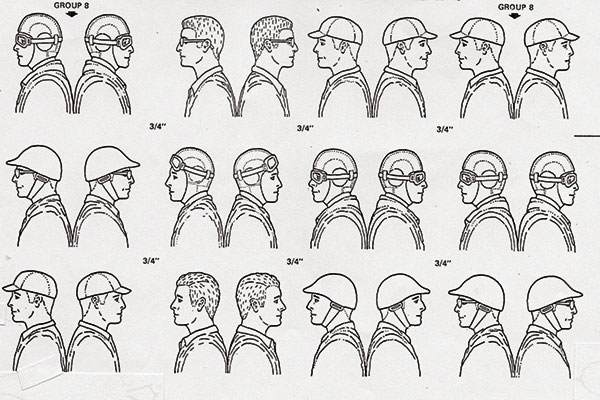
-Dennis Norman [email protected]










Add new comment